Slavery in Arkansas
We have explored the complex web of slavery in Arkansas—its origins, its brutal implementation, and the lasting economic and corporate ramifications. It also unearths connections between the slavery industrial complex and white-owned corporations that either directly profited from slavery or continue to benefit from systems rooted in it.
The slavery industrial complex refers not only to the physical and economic systems that supported slavery, but to the cultural, legal, and institutional frameworks that reinforced it. From cotton plantations in the Arkansas Delta to transportation companies, insurance firms, and banks in the North and Europe, the wealth generated by slavery in Arkansas contributed to the economic development of multinational enterprises and a transnational economy rooted in forced labor.
Arkansas entered the Union in 1836 as a slave state. By the time of the Civil War, there were over 111,000 enslaved African Americans living in the state, making up roughly a quarter of the total population. The Mississippi Delta region of Arkansas—especially counties like Chicot, Phillips, Jefferson, and Desha—became hubs of cotton production reliant on enslaved labor. The Arkansas River and its tributaries provided vital transportation arteries that facilitated the movement of enslaved people and agricultural goods.
Settlers and planters migrating from other southern states brought with them both enslaved laborers and the cultural framework to justify and expand slavery. In this way, Arkansas became a frontier for new plantation development, attracting investors and speculators who saw the untapped lands of the state as ripe for economic exploitation through forced labor.
Slavery in Arkansas was not only about cotton. Enslaved people were also used in mining, forestry, river work, road construction, and domestic labor. The industrial exploitation of enslaved people in these sectors helped fuel the regional economy and the wealth of local and national white elites.
The term "slavery industrial complex" is used to describe the interconnected web of institutions—economic, legal, religious, political, and cultural—that supported, legitimized, and benefited from slavery. In Arkansas, this system was deeply entrenched and multifaceted.
The state government created a legal infrastructure that protected and perpetuated slavery. Laws passed in Arkansas criminalized resistance by enslaved people, restricted their movement, and imposed harsh penalties for education or self-liberation efforts. Free Black people were also heavily policed, and laws were enacted to limit their presence and economic freedom. Local sheriffs, judges, and political figures often held interests in slaveholding, ensuring legal impunity for abuse and violence.
Churches in Arkansas often preached messages that justified slavery as part of a divine order. Southern Baptist and Methodist congregations frequently supported slavery, reinforcing the belief that Black people were divinely ordained to serve. Enslaved people were often forced to attend segregated church services where white ministers emphasized obedience and subservience.
Public education and cultural narratives promoted white supremacy and the moral justifications of slavery. Arkansas newspapers, many of which were subsidized by plantation owners or local elites, published articles defending slavery and dehumanizing African Americans.
Local banks in Little Rock, Pine Bluff, and Helena provided financing for the purchase of enslaved people and land for plantations. These banks often required human chattel as collateral, making their financial solvency directly tied to the perpetuation of slavery. Insurance companies, including firms with modern corporate successors, offered policies on enslaved people’s lives, treating human beings as insurable property.
Although Arkansas was primarily agrarian, the profits of slavery extended far beyond its borders. Many companies with roots in the 18th and 19th centuries benefited from the slavery-based economy of the American South, including Arkansas. Here are examples of industries and corporations that directly or indirectly profited from slavery in Arkansas:
JP Morgan Chase has publicly acknowledged that its predecessor institutions—including Citizens Bank and Canal Bank in Louisiana—accepted enslaved people as collateral and took ownership of them upon default.
New York Life Insurance Company sold life insurance policies to slaveholders to cover the lives of enslaved people. These policies treated enslaved individuals as disposable assets and protected slave owners’ investments.
Though these companies were not headquartered in Arkansas, their operations were national in scope, and they directly profited from slavery in states like Arkansas where slave ownership was high.
Railroad construction in Arkansas was funded by capital derived from slavery. The Memphis and Little Rock Railroad, for instance, received support from southern financiers whose wealth was built on enslaved labor. Enslaved people themselves were sometimes forced to work on rail construction.
Northern shipping firms such as Brown Brothers Harriman and Aetna also transported cotton from Arkansas to Europe and the northeastern U.S., profiting from slave-grown commodities.
Cotton produced in Arkansas found its way to textile mills in Massachusetts, Rhode Island, and England. Companies like Lowell Mills and Manchester-based factories in the UK relied on Southern cotton to fuel the Industrial Revolution. Thus, these corporations were essential nodes in a global slavery-based economy, even if they never owned enslaved people directly.
Firms like John Deere and McCormick produced plows and mechanical cotton pickers that made plantation agriculture more efficient. Though their early success was not exclusively dependent on slavery, the proliferation of their machinery among plantation owners in Arkansas reveals a connection to the slavery economy.
In addition to plantation labor, enslaved people in Arkansas were instrumental in building the state's infrastructure. They constructed roads, levees, and public buildings. Enslaved laborers helped build the original State Capitol in Little Rock. Cities such as Pine Bluff and Helena relied heavily on enslaved artisans, blacksmiths, and laborers for urban development.
State and local governments frequently rented enslaved people from private owners for public projects. This meant that even those who did not personally own enslaved individuals were financially invested in slavery through municipal operations. This widespread public complicity reinforces the understanding of slavery as an institutional, not merely individual, crime.
Despite the brutal conditions, enslaved people in Arkansas resisted in many ways. They organized clandestine meetings, learned to read and write in defiance of the law, sabotaged equipment, fled to freedom, and preserved African cultural traditions. The story of Slave Henry, who escaped from Chicot County and later joined Union forces, exemplifies the courage and determination of those who resisted the system. Arkansas also experienced its share of revolts and mass escapes.
Slavery in Arkansas represents one of the most defining, brutal, and yet overlooked chapters in the American narrative of racial capitalism. While often excluded from popular histories, Arkansas played a vital role in the expansion and maintenance of the slave economy in the American South. Its fertile land, mild climate, and geographic location made it ideal for cotton cultivation, which was the dominant economic driver across the southern states. As cotton production expanded in the 19th century, the demand for enslaved labor surged. Arkansas, particularly in the Delta regions and counties bordering the Mississippi River, became a crucial location for the exploitation of African-descended peoples through chattel slavery. From the moment Arkansas transitioned from territory to statehood in 1836, its economic identity was deeply entwined with the forced labor of Black bodies. Slavery was not just a social system—it was an economic engine carefully constructed to maximize profit, and that engine was run by planters, merchants, bankers, railroad magnates, and northern industrial investors, forming the backbone of what scholars today call the slavery industrial complex.
The slavery industrial complex refers to the vast network of institutions, industries, political policies, and social systems that benefited directly and indirectly from slavery. This was not a Southern-only phenomenon. Banks in New York, insurance companies in Connecticut, textile mills in Massachusetts, and shipping empires in Rhode Island all tied their fortunes to the continued production of cotton, sugar, rice, and tobacco, commodities that were cultivated almost entirely by enslaved labor in the South.
In Arkansas, the same interlocking systems of wealth and violence operated, with plantations fueled by Black labor producing cotton for global markets. Plantations in counties like Jefferson, Chicot, Desha, and Phillips were the scenes of daily brutality, where enslaved people—men, women, and children—cleared forests, built levees, worked cotton fields from sunup to sundown, and were subjected to extreme violence for any perceived disobedience. Every ounce of their labor generated wealth not for themselves, but for a white elite and a web of commercial partners in cities like St. Louis, New Orleans, and New York.
The port of Helena, Arkansas, grew as a hub for the cotton trade, shipping out bales of slave-grown cotton to textile mills in England and the northern United States. Each transaction, from the field to the factory, layered profit upon profit for white entrepreneurs and established generational wealth for their descendants. Meanwhile, the enslaved and later their freed descendants were left in a system that evolved but never entirely shed its exploitative nature.
The political power structure in Arkansas ensured slavery's endurance by crafting laws to support ownership of human beings. Slave patrols were formed to prevent escapes and uprisings, and legal codes made it a crime for Black people to learn to read, assemble in large groups, or claim autonomy. Slave markets operated in towns like Little Rock and Camden, with auctions attended by politicians, clergy, and businessmen who viewed Black bodies as commodities.
The Civil War, while devastating to the Southern economy, did not end the machinery of racial exploitation. Even after slavery was legally abolished in 1865, Arkansas quickly pivoted to other forms of bondage: sharecropping, convict leasing, Jim Crow segregation, and racial terror lynchings. The plantations of eastern Arkansas remained active, now hiring freedmen who were forced into economic arrangements that were scarcely distinguishable from slavery.
Sharecroppers had to rent land, tools, seeds, and even food from white landowners, who often manipulated books and wages to ensure that Black laborers remained in perpetual debt. This system allowed white families and corporations to continue to extract wealth from Black labor without the formal title of ownership. These arrangements were backed by local courts, sheriff's departments, and extrajudicial organizations like the Ku Klux Klan.
At the same time, northern companies continued to buy cotton from Arkansas. The same banks that once lent money to slaveowners now underwrote loans to large-scale planters and industrial farmers. Insurance companies that once insured the lives of enslaved people against loss continued to reap interest from these clients and reinvested profits in infrastructure, railroads, and stock ventures. Corporations like Aetna, New York Life, and JP Morgan Chase have all been documented as having financial ties to slavery. These institutions either directly insured slave owners against loss of enslaved people, loaned money secured by slaves as collateral, or handled transactions involving slave-grown commodities.
Some companies that exist today had their roots in these slave-backed financial systems. Lehman Brothers, for example, started as a cotton brokerage firm in Alabama, trading cotton grown by enslaved labor, and later relocated to New York to expand its financial empire. Wachovia, which merged into Wells Fargo, acknowledged its predecessors’ involvement in financing slave labor. In Arkansas, banks and railroads were heavily invested in by Northern capital, and much of that investment was predicated on the promise of profits generated by cotton—cotton grown by enslaved labor.
The Little Rock and Fort Smith Railroad, a key infrastructure project in Arkansas, benefited from land grants and capital investments tied to cotton wealth and postwar speculation in Black labor. The convict leasing system that followed slavery saw Arkansas leasing out Black prisoners—many of whom were arrested on trumped-up charges like “vagrancy” or “loitering”—to companies and farms. This was a direct continuation of slavery under a new name. Men were shackled, forced to work long hours under violent overseers, and died in alarming numbers. Companies that built infrastructure, such as railroads and levees, relied on this system to maintain profit margins. In the Arkansas Delta, prisoners were often worked to death repairing the very levees their ancestors had built under slavery.
These systems laid the foundation for present-day disparities in wealth, education, housing, and health. The modern descendants of Arkansas’s slaveowners hold generational wealth in land, banking, and business ventures. Their last names appear on street signs, buildings, and institutions. Meanwhile, the descendants of enslaved people continue to fight for access to quality education, healthcare, and fair wages. The vast difference in intergenerational wealth is not accidental—it is the product of centuries of stolen labor, broken promises, and systemic discrimination. Arkansas is now one of the poorest states in the nation, but that poverty is not evenly distributed. Black communities are disproportionately impoverished, and many live on or near the same lands their ancestors worked for free.
Modern corporations continue to benefit from the legacy of slavery. Wal-Mart, the largest company in Arkansas and one of the largest in the world, is headquartered in Bentonville. While Wal-Mart was not founded until after the end of legal slavery, its success is situated within a system built upon the historic suppression of Black economic mobility. The company's aggressive anti-union stance, low wages, and supply-chain practices echo the exploitative labor models of the past. It sources products from global suppliers with poor labor standards, mirroring the global commodity chains once fueled by enslaved labor. It operates in communities that were shaped by racist policies and benefits from tax incentives and zoning laws designed by historically white-led governments. While not directly profiting from slavery, it profits from a world built upon it.
Efforts to document and redress these harms have been slow and met with resistance. In Arkansas, public school curriculums rarely teach the full history of slavery in the state. Monuments still stand in honor of Confederate leaders, while markers acknowledging slave uprisings, lynchings, or Black resistance are rare. Attempts to research and publish this history are often underfunded or politically controversial. Yet the work continues. Black historians, community organizers, and descendants of enslaved Arkansans are pushing to preserve records, restore cemeteries, reclaim land, and demand reparations. The National Reparations Movement has gained steam across the United States, and Arkansas has seen local efforts to push for accountability, transparency, and investment in historically Black communities.
The story of slavery in Arkansas is not one of just cruelty and suffering—it is also a story of resilience and resistance. Enslaved people resisted in countless ways: by breaking tools, faking illness, organizing revolts, preserving language and culture, and escaping to freedom. After emancipation, Black Arkansans built churches, schools, and businesses, often in the face of racist violence. Towns like Elaine, where one of the worst racial massacres in U.S. history occurred in 1919, remind us of the costs of Black assertion and the lengths to which white supremacy will go to protect its economic dominance. The Elaine Massacre, which followed a Black farmers' union meeting, resulted in the death of an estimated 200 Black people. It sent a chilling message: any challenge to the racial status quo would be met with mass violence.
Yet Black organizing continued. The Civil Rights Movement in Arkansas produced leaders like Daisy Bates, who mentored the Little Rock Nine—nine brave Black students who integrated Central High School under military protection in 1957. Their courage and suffering made headlines, but they were also part of a longer arc of resistance rooted in the history of slavery. Every Black achievement in Arkansas—each election won, each business opened, each graduate walked across a stage—stands in defiance of a history that said Black people were property. And yet, corporations that profited from their ancestors’ forced labor have never paid reparations, never faced justice, and rarely acknowledged the source of their initial capital.
The call for reparations, especially corporate reparations, is growing. It demands more than apologies—it demands land transfers, investment in Black businesses and institutions, scholarships, policy changes, and a redistribution of wealth. Reparations in Arkansas would mean targeted investment in the Delta region, where Black communities were once the economic backbone of the state. It would mean auditing companies whose founding profits came from slavery and forcing accountability. It would mean telling the truth in classrooms and public spaces, building monuments to honor enslaved people, and teaching the next generation about both the horrors and the heroes of the past.
In the 21st century, digital tools, archival projects, and DNA databases have made it possible to trace lineages and connect the dots between enslaved people and modern corporations. This data is now being used to mount legal challenges and social justice campaigns. Arkansas has a unique opportunity to be a leader in this effort. It can face its past honestly, support restorative justice, and forge a future not based on exploitation but on equity. But this requires political will, corporate transparency, and grassroots pressure.
The legacy of slavery in Arkansas is not locked in the past. It breathes in the soil, echoes in courtrooms, and bleeds into every paycheck gap, school ranking, and public health disparity. It shaped the state’s economic identity, enabled white wealth, and engineered Black poverty. Only by confronting this history, demanding reparative justice, and dismantling the lingering structures of the slavery industrial complex can Arkansas—and America—begin to move toward true equality. Acknowledging the corporations that benefited from slavery is a step. Forcing them to make amends is justice.
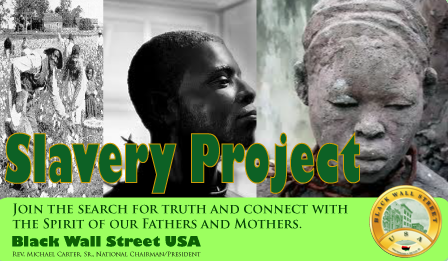


Alabama
Alaska
Arizona
Arkansas
California
Colorado
Connecticut
Delaware
Florida
Georgia
Hawaii
Idaho
Illinois
Indiana
Iowa
Kansas
Kentucky
Louisiana
Maine
Maryland
Massachusetts
Michigan
Minnesota
Mississippi
Missouri
Montana
Nebraska
Nevada
New Hampshire
New Jersey
New Mexico
New York
North Carolina
North Dakota
Ohio
Oklahoma
Oregon
Pennsylvania
Rhode Island
South Carolina
South Dakota
Tennessee
Texas
Utah
Vermont
Virginia
Washington
West Virginia
Wisconsin
Wyoming
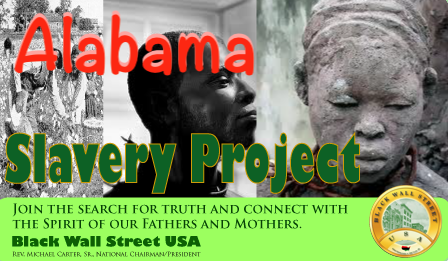
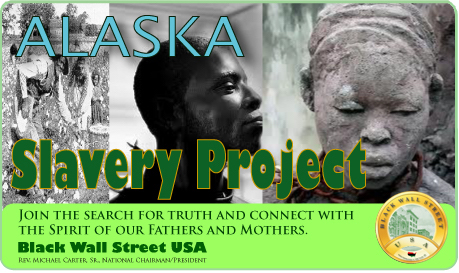



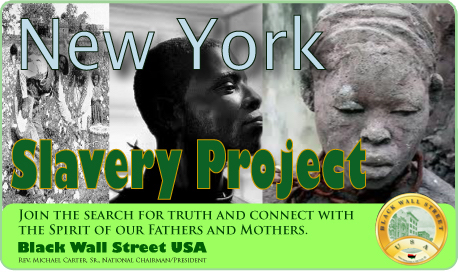

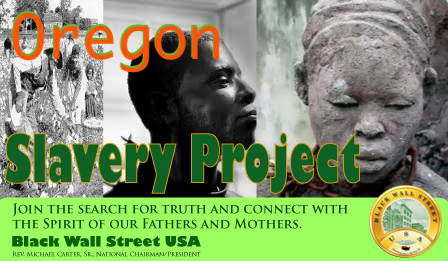
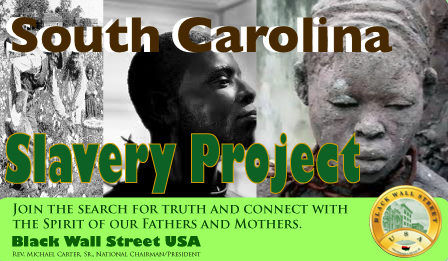
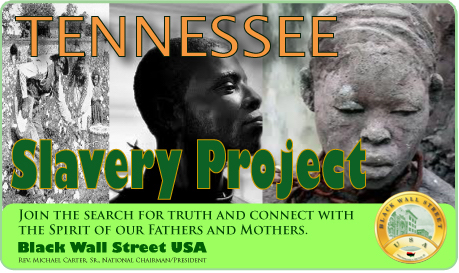
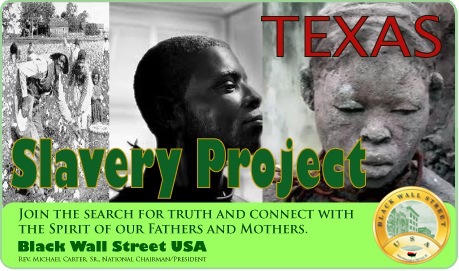



BlackWallStreet.org

Slave Records By State
See: Slave Records By State
Freedmen's Bureau Records
See: Freedmen's Bureau Online
American Slavery Records
See: American Slavery Records
American Slavery: Slave Narratives
See: Slave Narratives
American Slavery: Slave Owners
See: Slave Owners
American Slavery: Slave Records By County
See: Slave Records By County
American Slavery: Underground Railroad
See: American Slavery: Underground Railroad

